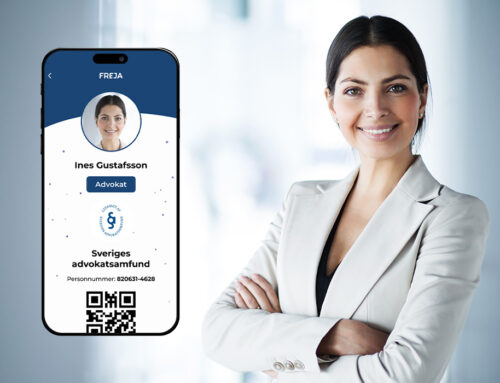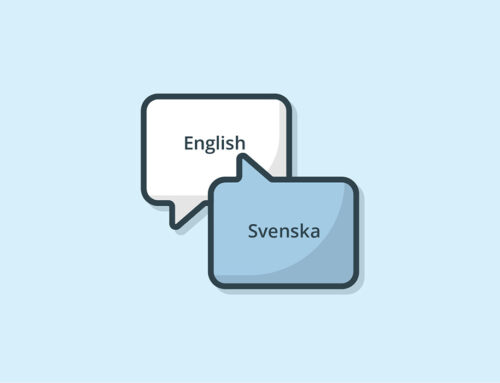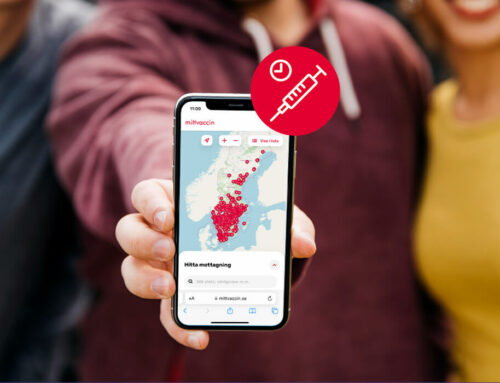You’ve probably heard that a million people are currently living in digital exclusion in Sweden, unable to access the services that most of us take for granted. However, what does this actually mean in practice? Thonia R. shared her story at a webinar organised by Funktionsrätt Skåne in February.
Living In Digital Exclusion
In the webinar, Thonia spoke about how living in digital exclusion affects her and her son in most aspects of everyday life:
I’m a mother to a 19 year old boy. I’ve had him essentially on my own for basically his whole childhood, I’m a single parent. And I was completely unprepared for how everything would become digitalised and how we would be left outside the system in this way.
The more digitalised society has become, the more problems have arisen for us. In the beginning it was basically just the pharmacies that we had issues with as they took away the option to log in with a code that we had previously. Suddenly, children from age 13 were expected to handle their own medications and contacts with healthcare professionals.
In light of this, Thonia began looking for different e-ID solutions, as the e-ID she could get from her bank for minors was only intended to be used internally in the banks services, not for external services such as healthcare and pharmacies. She found Freja, and after some help from the company, was able to get an e-ID issued for her son.
However, unfortunately, even once her son had acquired a government-approved e-ID, their issues weren’t resolved. The various pharmacies hadn’t, and still haven’t, implemented Freja as a login method. So despite the fact that her son could access 1177 they couldn’t go through the whole value chain with her sons e-ID.
Issues with Bureaucracy
Just before her son turned 18, Thonia realised that as a parent she could issue a fully externally valid variant of the bank’s e-ID to her son via the bank’s website. All the services that he couldn’t access with Freja were suddenly available to them. However, suddenly, when her son turned 18, the e-ID in question was blocked.
He couldn’t log in to his bank, he couldn’t see his accounts, he couldn’t make payments, he couldn’t log in to the pharmacy, and he couldn’t access his digital mailbox. He couldn’t make swish payments, he couldn’t buy a bus ticket, or even make a payment in the store. He couldn’t even go to the market and buy an ice cream of a bag of sweets.
No Alternative Options
The main issue in Thonia and her son’s case, was the lack of an option to help another person with their e-ID, a question in which the superintendent and the bank’s lawyers had differing opinions. On top of the everyday issues that arose, the blocking of her son’s e-ID also resulted in a cascade of other problems.
An example was that we were no longer able to access his digital mailbox, where he was still receiving government post, and they wanted us to call them. I should probably mention here that my son is unable to speak. So we had to sit there and try calling them to cancel the mailbox that we didn’t have access to, and during that time bills kept coming there that needed to be paid.
So we had to call to all the various senders and tell them to send the bills in paper instead. Finally, we were able to cancel the mailbox, but when you do so there is a 45 day grace period, and the bills just kept coming during that time.
Still Stuck in Digital Exclusion
They’ve since resolved their issues with some of the critical services but still cannot access all the services they need. Thonia’s son still has his Freja, but as long as all e-services don’t accept all government approved e-IDs digital exclusion will persist.
Another thing, you get shut out from government services for example. They don’t have all the solutions, for example “Försäkringskassan”, whom we have quite a lot to do with, still haven’t implemented Freja. I can log in as a representative for my son, but I can’t do all the things I need.
It shuts us out from many small companies who only choose to have Swish or a card reader for example. Like I said, my son can’t even go to the market and pay with swish like a lot of the sellers require, he can’t even buy a coffee at the “Fritidsgård” without borrowing money from a friend.
Thonia’s story, unfortunately, isn’t unique, and there is no lack of initiatives and ideas for how digital exclusion can be reduced. One of these suggestions is a government issued e-ID and another is to make it obligatory for all e-services to accept all the government approved e-ID solutions.
However, as there are already services and technical solutions that solve many of the problems those in digital exclusion face, a good first step would be for more e-services, especially healthcare related ones, to start accepting the more inclusive options that exist.







